Reviewing the Dumpster Faygos
Posted on Nov 22, 2014
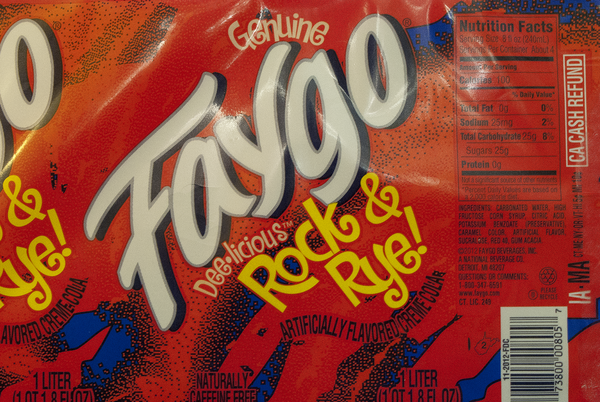
Warning
This article was originally written in 2014, at a time period where we had no income and lived in a basement. I, Will, am coming through a time machine in the year 2024 to inform you that this was not a fair review of Faygos. Yes, because these Faygos were taken from A DUMPSTER!
The sodas were already flat. I lied. Whether I knew it or not, I lied about the sodas. Shame on me. Shame on me forever. I’M SORRY, FAYGO.
Obligatory history section
Faygo is one of the strangest oddities of the soda world, perhaps because it’s one of the few sodas that has its own subculture based around it.
This peculiar soda got an early start in 1907. Two baker brothers, Ben and Perry Feigenson, had the idea to turn their cake frosting recipes into sodas. They started out with just three flavors: grape, strawberry, and fruit punch. The first batch of sodas was made in a small bottling plant in Detroit, Michigan, and they were sold off of the back of a horse cart. The sodas proved popular, and their company quickly grew into a local sensation. By the 1950s, they had re-worked the formula to give it a longer lasting shelf life, allowing Faygo to be sold across America.
It’s not unusual that the soda has such a lengthy history: Dr. Pepper, Coca-Cola, and Pepsi-Cola were all inventions of the late 19th century, and soft drinks and colas were already making a foothold in the world even before that.
Compared to those less regional brands, Faygo is well-known for being both tasty and inexpensive. Though it’s not as complex as some of the more obscure, locally-bound expensive bottled sodas, it’s leaps and bounds ahead of store-brands, which taste decent for about an hour at the most before they go unimpressively flat.
It’s because of its cheapness that the hip hop duo Insane Clown Posse was keen to adopt it as their trademark, as they were too poor in their youth to afford any other brand of soda. The “Juggalos”, the term given to the most devoted of ICP fans, have turned the soda pop into a symbol as prominent as their black-and-white face paint. There are contradictory stories as for why the ICP chose Faygo as one of their trademarks, but they have been referencing Faygo in their music ever since their debut album, and there’s certainly no end in sight for their love of the drink.
Despite the group and its fanbase’s full-hearted endorsement, Faygo Beverages, Inc. wants very little to do with them. The company brands its product as a family soda, so it doesn’t have a lot to gain from associating itself with a group that’s labelled by the FBI as a gang. Although the presence of the Insane Clown Posse has turned Faygo into a minor cultural trend, Faygo itself prefers to stick by its tried-and-true marketing strategy - one that doesn’t involve insane clowns.
With this in mind, Faygo is a very region-contained soda that doesn’t have much interest in expanding outwards. Its distribution is sporadic; even though it hails from the Midwest, it can still get hair-pullingly hard to find it in nearby states.
The Actual Review
Today we’ll be reviewing the three different varieties of Faygo that we could find: Rock & Rye, Old Fashioned Root Beer, and Ginger Ale. These are some of the more prominent flavors of Faygo available, and some of the most decorated. We looked forward to seeing if these sodas would live up to their hype.
Rock & Rye
The color is a very deep, cherry-like red. The color is so dark that we thought it was going to be a cola at first, but once we opened it up and smelled it we knew immediately that it was going to be a cream soda. Poured into a small glass, the color is more clearly red than the near-black it appears in the bottle.
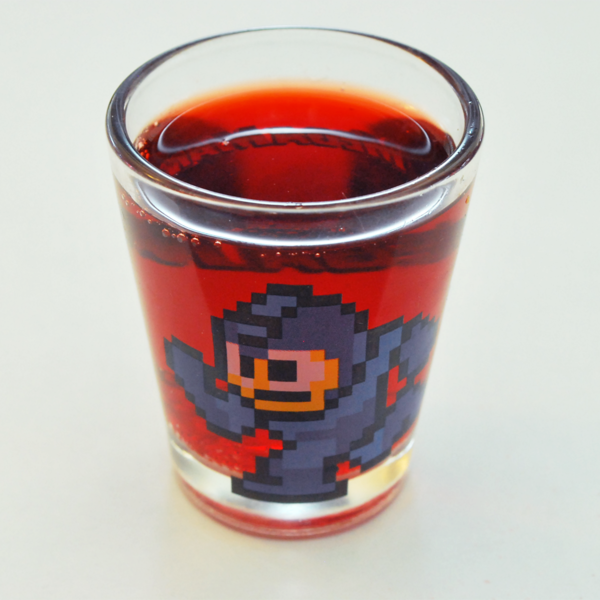
Guest starring: Our friend, the Mega Man shot glass.
The immediate flavor is like bubble gum, tasting pink and creamy and artificial. It’s smooth, not acidic at all, with a syrupy mouthfeel[1] that coated our mouths and made us crave salt. It’s cloyingly sweet, in a way that’s reminiscent of cherry cough syrup, minus the unpleasant medicinal qualities.
On the downside, the aftertaste is surprisingly metallic, in a way that only something chock full of Red 40 can taste. The only real way to wash this taste down is to drink more of it, so it was hard to pace our drinking. This isn’t really a strong complaint, though, as it tasted much better in bigger chugs.

It's Dee·licious™!
Rock & Rye is a very unique soda, with a flavor that we haven’t experienced in anything else. Though it’s overwhelmingly artificial and sugary, we found its particular taste to be so delightful and hard to resist that we couldn’t give this anything less than a 5 out of 5.
Root Beer
This soda’s color is a rich brown, and it’s satisfyingly clear when held up to the light. It smells medicinal, with the typical notes of sasparilla and that wintergreen flavor reminiscent of Pepto-Bismol; it’s a promisingly sharp scent.
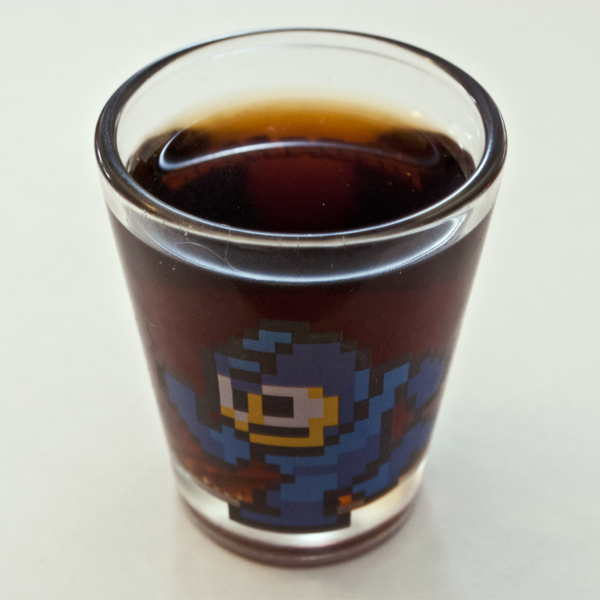
It kind of looks like Mega Man is drowning in sewer sludge.
Despite its sharp odor, the first taste is thin and smooth. It’s kind of watery, and the initial burst of flavor wears off fast[2], leaving a bitter aftertaste. We actually enjoyed it, because the overall flavor was more rounded and balanced than other, much more metallic root beers. This soda is focused on creamy smoothness, rather than sharp bite, giving it a more unique flavor profile. It’s good to sit and sip on, since it doesn’t really beg to be chugged in large and fast quantities.
The real surprise was accidentally leaving this soda out for a few hours. Once warm, it becomes thicker and much easier to savor. The flavors mingle together, making something much more complex, with notes of caramel.
We’d really like to try this in a root beer float, but we had no ice cream on hand. Vanilla would make the perfect complement to this.
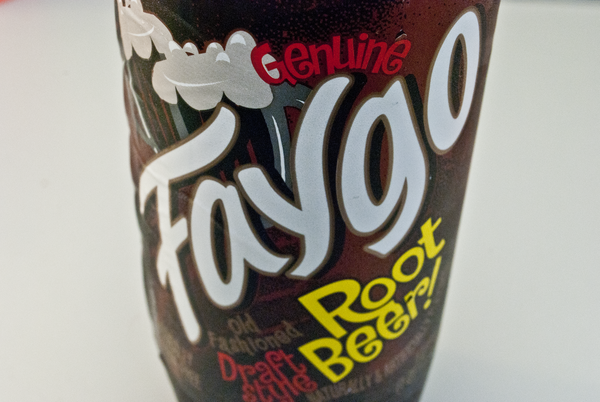
Old Fashioned - just the way the cowboys drank it. We think. Probably not.
Root beer is a flavor done by many other competitors, and some have done it much better. However, Faygo’s attempt stands out on its own, with smooth and sweet qualities. If you’re looking for a root beer with some bite to it, this isn’t it, but if you want nice, rounded flavors with gentle sweet notes, we recommend this.
Ginger Ale
This soda is pale golden and very clear, the bubbles sparkling like pop-rocks. There wasn’t much of a detectable smell, besides a faint scent of ginger.
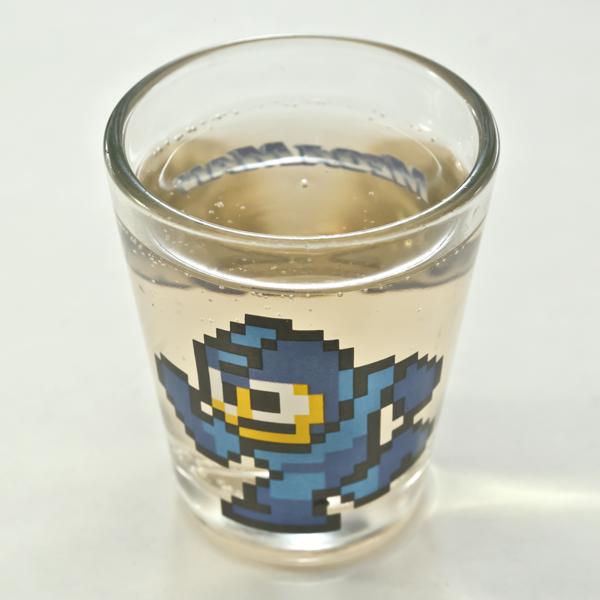
Free him.
Once sipped, it presented a nice, light gingery flavor. The soda has a tart and bubbly texture, with good notes of citrus and pleasant sweetness. This soda’s sweetness gives it a rather sticky mouthfeel, however, and its bubbling made it a little difficult to taste due to the action on the tongue. The soda gets even syrupier when it goes flat, and it goes flat fast[3].
The thick texture it left in our mouths was unpleasant. This works well enough as a mixer for other drinks (we found it was a surprisingly good match for some grape soda we had on hand), but its strong flavors make it more suited for being enjoyed on its own.
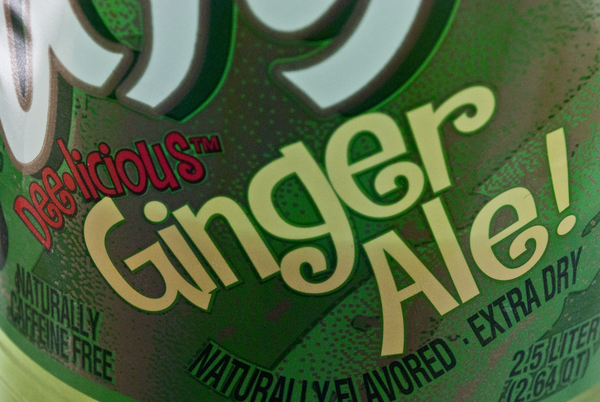
It really doesn't taste Extra Dry. More like Kinda Dry.
Ginger ale is an oddity among sodas. It sprouted off as the non-alcoholic form of a hard drink called ginger beer, and found its popularity during Prohibition as a mixer for cocktails. Today, ginger beer is a rarity, and ginger ale has found public popularity. Faygo’s Ginger Ale doesn’t stand out that much compared to other ginger ale brands, but on its own, it works very well as a standalone drink and as a mixer. We would recommend drinking this one straight, because when mixed with other drinks, its syrupiness tends to overwhelm the other flavors.
Overall
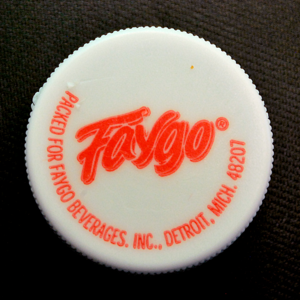
Here's a funny cap-tion. Get it? Right? Yeah!
Faygo definitely has a substantial following, but in our eyes, it doesn’t hold up so much to its memetic qualities. After all, it’s unique soda, but when it tastes good for what you’d expect out of a dollar store, that’s pretty much the baseline praise. That said, keeping in mind that we’ve tasted much worse $1 sodas in the past, Faygo is definitely a memorable brand. We’d gladly buy another bottle of Rock & Rye again… if we could find it.
Categories: food